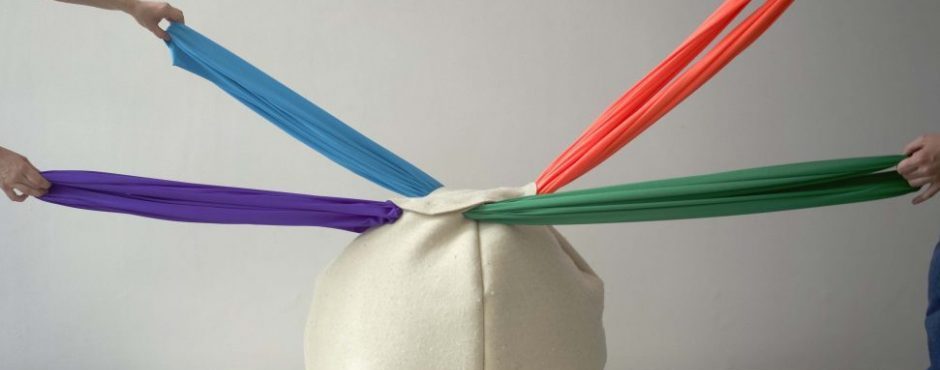Polly Savage’s The New Life: Mozambican Art Students in the USSR, and the Aesthetic Epistemologies of Anti-Colonial Solidarity (2022) examines the experiences of Mozambican bolseiros in the Soviet art education system during the 1980s. The text focuses on their training in Tashkent, Uzbekistan, and its impact on their artistic practices. The text delves into the complex dynamics of Soviet-Mozambican cultural exchanges, addressing both the imposition of hegemonic norms and the creative agency of Mozambican artists who navigated and reinterpreted these influences.
This was not my favourite reading from the assigned list. I initially struggled to engage with it, as the subject matter did not resonate with my interests, but once I started reading, I found it intellectually stimulating. The narrative highlights how socialist realism, the dominant artistic framework in the USSR, imposed figurative representations of the “ideal” socialist worker or revolutionary. My interest in avant-garde art movements, particularly Dada and Surrealism, amplified my discomfort with socialist realism’s ideological rigidity and resemblance to styles I associate with oppressive regimes and exclusionist art..
Walter Benjamin’s concept of the “aestheticization of politics” (1935) provides a useful framework for understanding this discomfort. Although Benjamin’s critique primarily addresses fascism, I find parallels in the manipulation of art under socialist realism. Where fascism used art to glorify irrational power and preserve the status quo, socialist realism glorified power structures grounded in Marxist-Leninist principles. While the ideological ends differed, the shared reliance on emotionally charged and visually monumental forms raises important questions about the manipulative potential of such visual strategies. For instance, Italian Futurism’s celebration of vitality and strength shares an aesthetic kinship with socialist realism, though the former embraced abstraction over figurative representation.
Savage’s discussion of how Mozambican artists adopted socialist realism also reveals the nationalist instrumentalisation of art in post-independence Mozambique. These works often glorified the anti-colonial struggle and FRELIMO’s vision of progress, showing how art became a tool for constructing a cohesive Mozambican national identity. This dual function—serving both socialist ideals and nationalist goals—struck me as a contradiction, reflecting a broader trend of political agendas co-opting art.
However, I also appreciated Savage’s nuanced portrayal of Mozambican artists as active agents rather than passive recipients of Soviet ideology. They adapted and reinterpreted socialist realism to reflect local struggles and cultural symbols, an act of creative resistance within a constrained framework. As highlighted in Figure 1, this subversive adaptation, (although limited by a nationalist proposition), reveals how art can negotiate power, identity, and aesthetics within anti-colonial solidarity and global socialist movements.
Savage also acknowledges the pragmatic motivations behind Mozambique’s alignment with socialist states. As Mekonnen notes, the Soviet bloc provided “the only narrow way of access to overseas” (Savage, 2022, p. 1083). This contextualises the bolseiros’ engagement with Soviet art not as pure ideological conformity but as a necessary strategy for cultural and intellectual development during a fraught political period.

Yet, the text’s broader political implications remain troubling. While Savage does not shy away from discussing FRELIMO’s authoritarianism in post-independence Mozambique, I felt this aspect could have been explored further. The centralisation of power under Samora Machel and the suppression of dissent arguably shaped the role of art as a nationalist tool. My discomfort with socialist realism partly stems from this context, where the government’s ideological goals limited creative autonomy.
Despite my initial resistance to the reading, it offered valuable insights into the tensions between form and content, freedom and propaganda, and modernism and realism.
Finally, Savage’s ideas have implications beyond art history, particularly for fields like UX design. Understanding the sociopolitical and cultural contexts of design is critical in creating inclusive, socially responsible, and culturally aware practices. The concept of “epistemologies of solidarity” encourages us to explore how design can reflect diverse values and struggles, fostering empathy and cross-cultural understanding. As a teacher, I already emphasise with these principles in my classes, urging students to critically consider how their work can empower marginalised voices or perpetuate existing hierarchies.
(Total word count: 655)
References:
Benjamin, W., 2018. The work of art in the age of mechanical reproduction. In A museum studies approach to heritage (pp. 226-243). Routledge.
Savage, P., 2022. ‘The New Life’: Mozambican Art Students in the USSR, and the Aesthetic Epistemologies of Anti-Colonial Solidarity. Art History, 45(5), pp.1078-1100.
